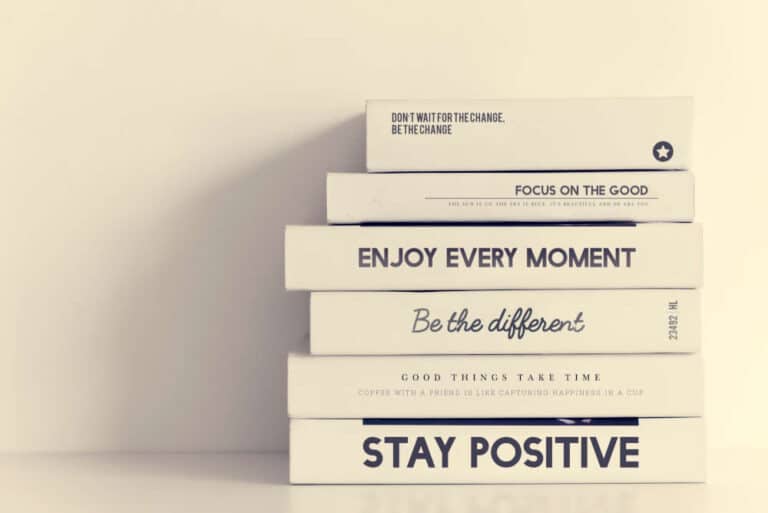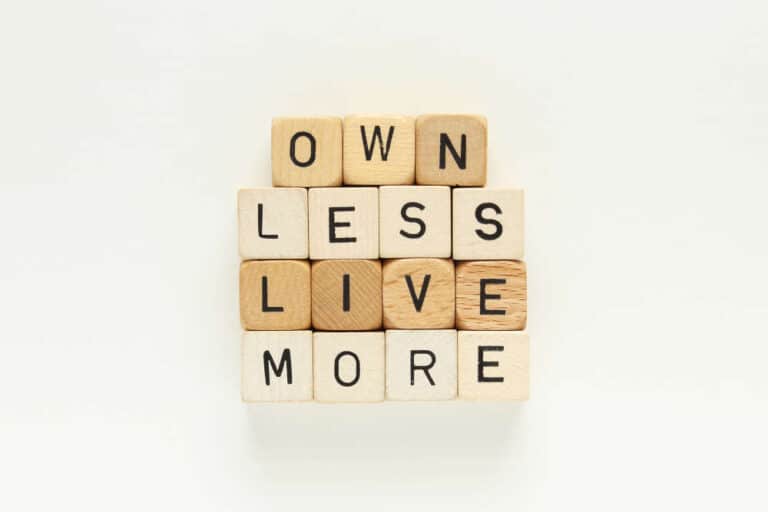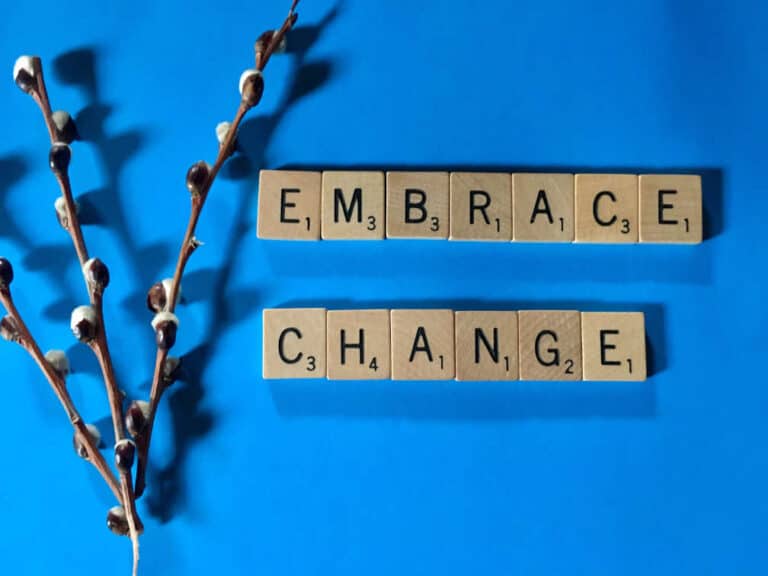10 Popular Questions on – Essential Tips For Living With Less
Discover actionable Essential Tips For Living With Less through real-life case studies. Learn to adopt a minimalist lifestyle today.

1 What Are the Top 5 Essential Tips for Living With Less Clutter?
Ah, clutter—the ever-accumulating monster in our closets, garages, and, let’s be real, our lives. It’s as if these things multiply while we sleep, right? But fear not, brave soul! We’re about to drop some serious wisdom on you. Grab a cuppa and sit tight, because these essential tips for living with less clutter are game-changers.
The Ground Rules
First off, let’s get one thing straight: less is more. It’s not just a catchy phrase; it’s the cornerstone of our mission here. Just like the soil needs to be fertile for a seed to sprout, a clutter-free space sets the stage for a clutter-free mind.
Tip 1: The One-In, One-Out Rule
Ah, the ol’ one-in, one-out rule—a classic, yet often ignored piece of advice. For every new item you bring into your space, bid adieu to another. It’s like musical chairs, but with stuff. You gotta keep the balance, you know?
How to Implement
- Identify Hotspots: Locate the clutter magnets in your home.
- Set Boundaries: Limit the number of items that can be in a hotspot.
- Regular Checks: Schedule weekly decluttering sessions.
Table: One-In, One-Out Rule
| Steps | Implementation | Frequency |
| Identify | Locate hotspots | Once |
| Set Boundaries | Limit items | Once |
| Regular Checks | Weekly declutter | Weekly |
Tip 2: The 90/90 Rule
Have you used the item in the last 90 days? Will you use it in the next 90? No? Toss it! It’s like a trial by fire, only less dramatic.
How to Implement
- Inventory: Make a list of items you’re unsure about.
- Check Usage: Log any usage over 30 days.
- Decision Time: Keep or discard based on usage.
Tip 3: Quality Over Quantity
Choose quality over quantity—always. It’s the difference between owning a Swiss watch and a dozen cheap knock-offs.
How to Implement
- Research: Invest time in understanding product quality.
- Budget: Be willing to spend more for lasting items.
Tip 4: Digitize It
Who says memories can only be physical? Click a pic, save it on the cloud, and free some physical space. It’s like capturing your cake and eating it too!
How to Implement
- Identify: Locate sentimental items.
- Photograph: Take high-quality photos.
- Store: Save them digitally.
Tip 5: The 30-Day Rule
Hold off on impulse buys for 30 days. If you still want it after the waiting period, go for it. This rule is your wallet’s best friend!
How to Implement
- Identify: Recognize your impulse buys.
- Wait: Hold off for 30 days.
- Decide: Purchase or pass.
Key Takeaways
- One-In, One-Out Rule: A balanced approach to belongings.
- 90/90 Rule: The ultimate test of utility.
- Quality Over Quantity: A mantra for meaningful living.
- Digitalize It: Embrace the digital age.
- 30-Day Rule: A pause button for impulse buys.
Conclusion
- Embrace Simplicity: The less you own, the less that owns you.
- Be Mindful: Every item should serve a purpose.
- Commit: It’s a lifestyle, not a one-off chore.
2 How Can Living With Less Improve Your Mental Health?
Ever feel like you’re wading through a swamp—muddy, murky, and meandering? No, we’re not talking about your last camping trip gone awry. We’re talking about the swamp of stuff that bogs down more than just your living room. You see, living with less isn’t just about saving space; it’s a mental health elixir, a tonic for the soul.
The Mind-Stuff Connection
Let’s kick things off with a reality check: our external environment is a mirror of our internal world. Yeah, you read that right. A cluttered home often reflects a cluttered mind, and vice versa.
The Science Behind It
Here’s where things get juicy. Studies have shown that living in cluttered spaces can increase levels of cortisol, the stress hormone. And we all know, stress is as welcome as a skunk at a lawn party.
Table: The Mind-Stuff Connection
| Factor | Impact on Mental Health | Remedy |
| Clutter | Increases stress | Declutter |
| Excess belongings | Causes anxiety | Donate or sell |
| Disorganization | Hampers focus | Organize |
Tip 1: Identify Stress Triggers
First thing’s first: know thy enemy. What items or spaces make you anxious or stressed? Is it that mountain of laundry or the stack of unopened mail?
How to Implement
- Spot Triggers: Identify items or areas causing stress.
- Prioritize: Rank them by the level of stress they cause.
- Action Plan: Create a plan to tackle each trigger.
Tip 2: Create Zen Spaces
Your home should be your sanctuary, not a battlefield. A Zen space is as refreshing as a cool breeze on a sweltering day.
How to Implement
- Choose a Space: Pick an area for relaxation.
- Minimal Decor: Keep it simple and elegant.
- Daily Use: Utilize the space for daily relaxation.
Tip 3: Mindfulness Through Less
The art of mindfulness isn’t confined to yoga mats and meditation cushions. Living with less encourages mindfulness—it’s like training wheels for a tranquil mind.
How to Implement
- Be Present: Engage fully in decluttering activities.
- Reflection: Ponder on the need for each item.
- Decide: Keep items that add value to your life.
Tip 4: Digital Detox
Ah, the siren call of endless scrolling. While digital clutter may be less visible, its mental toll is real and insidious.
How to Implement
- Identify: Recognize your digital clutter sources.
- Unsubscribe: Opt-out of unnecessary notifications.
- Cleanse: Regularly declutter your digital spaces.
Tip 5: Celebrate Small Wins
Don’t underestimate the joy of small victories. Each decluttered space is a stepping stone to better mental health.
How to Implement
- Set Goals: Create achievable milestones.
- Celebrate: Reward yourself after reaching each one.
- Maintain: Keep the momentum going.
Key Takeaways
- Identify Stress Triggers: Know what items or areas stress you out.
- Create Zen Spaces: Make room for tranquility.
- Mindfulness Through Less: Be present during your decluttering journey.
- Digital Detox: Don’t forget the clutter in your digital world.
- Celebrate Small Wins: Enjoy the journey, not just the destination.
Conclusion
- Holistic Approach: Living with less is a holistic approach to better mental health.
- Commit to the Journey: It’s a marathon, not a sprint.
- Seek Balance: Less clutter, more clarity.
3 What Is the Minimalist Approach to Living With Less?

Picture this: a room so crisp and clean, it almost sings a silent symphony of serenity. Ah, the minimalist approach—it’s not just a trend; it’s a philosophy, a way of life. Living with less in a minimalist way is like sipping a cup of matcha—pure, uncomplicated, and profoundly calming.
The Heart of Minimalism
Before we dive into the nitty-gritty, let’s talk big picture. What is minimalism at its core? It’s the art of focusing on what truly matters by stripping away the excess. It’s like peeling an onion, layer by layer, to get to the heart of your life.
Philosophical Roots
Minimalism isn’t some millennial fad; its roots dig deep into various philosophies and cultures. From Zen Buddhism to Stoicism, minimalism has been the unsung hero of many a peaceful mind.
Table: Philosophical Roots of Minimalism
| Philosophy | Key Principles | How It Aligns With Minimalism |
| Zen Buddhism | Simplicity, focus | Encourages a clutter-free life |
| Stoicism | Control, detachment | Teaches emotional simplicity |
| Epicureanism | Pleasure through less | Advocates mindful consumption |
Tip 1: Essentialism is Key
In the world of minimalism, essentialism reigns supreme. The focus is on need, not want. It’s like grocery shopping with a list—no distractions, just the essentials.
How to Implement
- List Essentials: Create a list of items crucial to your well-being.
- Review: Periodically assess the list for any excess.
- Update: Adapt the list as your life changes.
Tip 2: The Power of White Space
Ah, the beauty of nothingness! Just like the pauses in a melody make the music, the empty spaces in your home amplify its beauty.
How to Implement
- Identify: Find spaces that can be left empty.
- Plan: Sketch out how to maintain that emptiness.
- Execute: Keep the space clutter-free.
Tip 3: Multipurpose Magic
Why have ten when one will do? A Swiss Army knife of sorts for your life, multipurpose items are the linchpin of a minimalist lifestyle.
How to Implement
- Spot Candidates: Identify items that serve multiple functions.
- Invest: Choose quality multipurpose items.
- Replace: Swap out single-purpose items when possible.
Tip 4: The Joy of Less
Living with less isn’t about sacrifice; it’s about gaining more—more time, more focus, more peace. It’s like taking off a heavy backpack after a long hike.
How to Implement
- Reflect: Think about what you gain through minimalism.
- Track: Monitor changes in your well-being.
- Share: Discuss the benefits with your circle.
Tip 5: Minimalism Beyond Material
Minimalism extends beyond the physical realm; it’s also about decluttering your digital and emotional worlds. Think of it as spring cleaning for the soul.
How to Implement
- Identify: Spot non-material areas that need decluttering.
- Plan: Create a strategy to tackle each area.
- Execute: Implement the strategy over time.
Key Takeaways
- Essentialism is Key: Focus on what truly matters.
- Power of White Space: Embrace emptiness.
- Multipurpose Magic: Versatility is valuable.
- Joy of Less: Gain more by owning less.
- Beyond Material: Minimalism is a holistic approach.
Conclusion
- Life Philosophy: Minimalism isn’t a trend; it’s a lifestyle.
- Holistic Approach: It extends to every aspect of life.
- Lasting Impact: The benefits are far-reaching and profound.
4 How Does Living With Less Impact Your Relationships?
Picture this: A couple sits in a room filled with stuff—gadgets, knick-knacks, endless wardrobes—yet the space between them is palpable, almost a physical entity. Now, let’s flip the script. Imagine a room with just the essentials, where the air is lighter and the emotional connection stronger. That’s the magic of living with less; it has the power to transform not just spaces but relationships too.
The Relationship Equation
Let’s crunch some numbers, shall we? No, not those boring algebraic equations from high school. We’re talking about the equation of life and love. Living with less can actually be the secret variable that balances this equation.
The Emotional Baggage
Sometimes the weight we carry isn’t in our closets but in our hearts. Emotional baggage is the clutter no one talks about, but everyone owns. Living with less forces you to confront and declutter this hidden hoard.
Table: Emotional Baggage and Its Impact
| Type of Baggage | Impact on Relationship | How Living With Less Helps |
| Past Traumas | Creates distrust | Forces confrontation |
| Old Grudges | Fuels passive-aggression | Encourages letting go |
| Unmet Expectations | Causes resentment | Promotes realistic outlook |
Tip 1: Open Dialogue
The first step in any relationship fix is communication. Living with less necessitates dialogue—you can’t declutter in a vacuum, after all.
How to Implement
- Initiate: Start the conversation about decluttering.
- Discuss: Share the emotional and physical benefits.
- Plan: Make a joint decluttering schedule.
Tip 2: Shared Goals
When you both commit to living with less, you set a shared goal. It’s like running a marathon together—you share the sweat, the pain, and the ultimate glory.
How to Implement
- Identify: Determine what both parties want to achieve.
- Set: Create measurable goals.
- Review: Regularly check-in on progress.
Tip 3: Quality Time
Living with less often frees up time, the currency of love. Imagine filling that newfound time with shared experiences and memories.
How to Implement
- List: Create a bucket list of experiences.
- Prioritize: Decide what to do first.
- Execute: Make time for these experiences.
Tip 4: Conflict Resolution
Less stuff often means fewer conflicts. After all, it’s hard to argue over who left the blender out when you don’t own one!
How to Implement
- Identify: Recognize triggers for petty arguments.
- Remove: Eliminate or replace these triggers.
- Reflect: Take time to appreciate the reduced friction.
Tip 5: Emotional Availability
With less physical clutter, emotional availability often increases. It’s like clearing the weeds to let the flowers bloom.
How to Implement
- Acknowledge: Recognize emotional barriers.
- Discuss: Talk openly about these barriers.
- Act: Take steps to remove or mitigate them.
Key Takeaways
- Open Dialogue: Communication is key.
- Shared Goals: Align your decluttering aims.
- Quality Time: Use the extra time wisely.
- Conflict Resolution: Fewer things, fewer fights.
- Emotional Availability: Make room for deeper connections.
Conclusion
- Deep Impact: Living with less profoundly impacts relationships.
- Shared Journey: It’s an adventure best undertaken together.
- Heartfelt Gains: The benefits extend far beyond the physical realm.
5 Can Living With Less Actually Make You Wealthier?

Imagine finding a goldmine, not in some remote mountain range, but right in your own home. Sounds like a fairy tale, doesn’t it? But what if I told you that the alchemy of living with less could turn your life into a treasure trove? No dragons to slay or quests to undertake, just the simple act of decluttering. Let’s dive in, shall we?
The Wealth Equation
Ah, the age-old quest for wealth. But here’s the twist: wealth isn’t just about accumulating more; it’s also about needing less. It’s as if your bank account has two levers: income and expenditure. Living with less pulls the expenditure lever down, giving your wealth a surprising boost.
The Psychology of Spending
We often splurge not for necessity but for emotional gratification. It’s retail therapy, but the relief is often short-lived, leaving only bills and clutter in its wake.
Table: Psychology of Spending and Its Impact
| Emotional Triggers | Typical Spending | Impact of Living With Less |
| Stress | Impulse buys | Reduced stress, less spending |
| Social Pressure | Keeping up with the Joneses | Confidence in simplicity |
| Boredom | Online shopping | Engage in meaningful activities |
Tip 1: The Hidden Costs
Beneath the price tag lurk hidden costs: maintenance, storage, and even mental burden. Recognizing these can be a game-changer.
How to Implement
- Identify: List all your possessions and their associated costs.
- Analyze: Compute the total cost of ownership.
- Decide: Keep or discard based on this new insight.
Tip 2: The Investment Angle
With the money saved from living with less, you could potentially invest in wealth-generating avenues. It’s like planting seeds for a money tree.
How to Implement
- Research: Look into investment options that suit your risk profile.
- Consult: Seek professional financial advice.
- Invest: Start small and increase gradually.
Tip 3: Time is Money
The time you save from less cleaning, organizing, and maintaining can be directed towards lucrative or enriching activities.
How to Implement
- Identify: Calculate the time saved through living with less.
- Plan: Allocate this time to income-generating or skill-enhancing activities.
- Execute: Put the plan into action.
Tip 4: Experiential Richness
Sometimes wealth isn’t in your bank but in your experiences. Living with less often frees up resources for enriching experiences.
How to Implement
- List: Create a wish list of experiences.
- Budget: Allocate funds for these experiences.
- Enjoy: Go ahead and enrich your life.
Tip 5: Financial Freedom
Living with less can accelerate your journey to financial freedom. Imagine a life where you work because you want to, not because you have to.
How to Implement
- Calculate: Know your financial freedom number.
- Strategize: Create a roadmap to reach this number.
- Review: Regularly update your strategy based on progress.
Key Takeaways
- Hidden Costs: Understand the true cost of ownership.
- Investment Angle: Redirect savings to wealth creation.
- Time is Money: Utilize saved time lucratively.
- Experiential Richness: Wealth can also be experiential.
- Financial Freedom: Living with less can fast-track financial independence.
Conclusion
- Paradox Solved: Less can indeed mean more wealth.
- Double Benefit: Save money and gain peace of mind.
- Life-Changing: The impact extends far beyond your bank account.
6 What Are Some Essential Tips for Living With Less in a Consumerist Society?
Ah, the land of plenty! Where billboards scream “Buy me!” and shop windows wink seductively. It’s like being in a candy store 24/7. But what if you could stroll through this consumerist wonderland without filling your pockets and cluttering your life? That’s right, folks, living with less in a consumerist society is not just a pipe dream; it’s entirely doable. Let’s get into the nitty-gritty.
The Consumerist Labyrinth
Imagine being in a maze, every turn leading to a tempting offer or a flashy ad. That’s what navigating a consumerist society feels like—a labyrinth designed to make you want more. But guess what? You can beat the Minotaur and come out unscathed.
The Social Media Trap
Ah, the double-edged sword of social media! On one hand, it connects; on the other, it coerces. The constant bombardment of curated lifestyles can make anyone feel ‘less than.’
Table: Social Media Triggers and Counteractions
| Social Media Triggers | Typical Reaction | Living With Less Counteraction |
| Influencer posts | Want to emulate | Realize it’s a curated image |
| FOMO triggers | Impulse buying | Reflect on real needs and wants |
| Ads | Temptation | Practice digital minimalism |
Tip 1: The Pause Button
Before you swipe that card or click ‘Buy Now,’ pause. Give yourself time to question the need versus the want. It’s like taking a deep breath before diving in.
How to Implement
- Pause: When tempted, wait for 10 minutes.
- Reflect: Consider if it’s a need or a want.
- Decide: To buy or not to buy.
Tip 2: The Joy Metric
In a world of endless choices, let joy be your guide. If an item doesn’t spark joy, as Marie Kondo would say, it probably doesn’t belong in your life.
How to Implement
- Identify: Spot items that no longer bring joy.
- Remove: Thank them and let them go.
- Replace: If necessary, with something that truly delights.
Tip 3: The Experiential Swap
Instead of material gifts, opt for experiences. It’s like swapping a sugar rush for sustained energy.
How to Implement
- List: Make a list of experiences you’d cherish.
- Discuss: Encourage friends and family to gift experiences.
- Enjoy: Relish the moments, not the material.
Tip 4: Digital Minimalism
Unsubscribe, unfollow, declutter. Your digital space is as important as your physical one. Keep it clean, keep it simple.
How to Implement
- Identify: Spot digital distractions and temptations.
- Remove: Unfollow, unsubscribe, or block.
- Maintain: Periodically review and clean up.
Tip 5: Community Over Consumerism
The people around you can either fuel consumerism or foster minimalism. Choose your tribe wisely.
How to Implement
- Identify: Recognize the influencers in your social circle.
- Communicate: Share your desire to live with less.
- Engage: Participate in or create minimalist community activities.
Key Takeaways
- Pause Button: Think before you spend.
- Joy Metric: Let joy guide your choices.
- Experiential Swap: Opt for experiences over items.
- Digital Minimalism: Keep your digital life clutter-free.
- Community Over Consumerism: Your tribe affects your vibe.
Conclusion
- Possible, Not Impossible: Living with less in a consumerist society is doable.
- Mind Over Material: It’s about making mindful choices.
- Community Counts: The right community can make all the difference.
7 How Can Living With Less Contribute to Sustainability?
Imagine a world where the sky isn’t choked with smog, and the oceans aren’t plastic soups. Sounds like a dream, doesn’t it? But what if this dream could inch closer to reality through a simple lifestyle change? Yes, you guessed it—living with less isn’t just good for you; it’s good for Mother Earth too. Let’s explore this green utopia.
The Sustainability Circle
Think of sustainability as a circle, where every action, no matter how small, can ripple outward. Living with less tightens this circle, bringing us closer to a sustainable lifestyle. It’s like tightening loose bolts on a machine; the whole system runs more efficiently.
The Resource Drain
Our incessant consumption isn’t just draining our wallets; it’s draining the planet’s resources too. It’s like a never-ending party where the hangover is felt by the Earth.
Table: Resource Drain and Its Reversal
| Resource | Typical Drain | How Living With Less Helps |
| Water | Excessive laundry | Reduced clothing consumption |
| Energy | Unused gadgets | Mindful use of electronics |
| Land | Landfills | Reduced waste generation |
Tip 1: Mindful Consumption
Buying less isn’t just about saving money; it’s about saving resources. Every item skipped is a win for the planet.
How to Implement
- Assess: Before buying, consider the item’s environmental impact.
- Research: Opt for sustainable alternatives.
- Decide: Make an informed choice.
Tip 2: The Reuse-Recycle Mantra
The less you toss, the less ends up in landfills. Reusing and recycling are the superheroes of sustainable living.
How to Implement
- Identify: Spot items that can be reused or recycled.
- Act: Either repurpose them or find a recycling facility.
- Educate: Spread the word about the importance of this mantra.
Tip 3: Digital Sustainability
Even your digital footprint has an environmental impact. Streamlining this can contribute to sustainability.
How to Implement
- Recognize: Be aware that digital storage isn’t ‘free’ environmentally.
- Declutter: Delete unnecessary files and emails.
- Optimize: Use cloud storage judiciously.
Tip 4: Local Living
Reducing your dependency on imported goods can substantially lower your carbon footprint. It’s like choosing the neighborhood bakery over a supermarket chain.
How to Implement
- Identify: Spot locally available alternatives for your needs.
- Switch: Make the change to local products.
- Support: Advocate for local businesses.
Tip 5: Minimalist Travel
Traveling light isn’t just convenient; it’s eco-friendly. Less luggage means less fuel consumption.
How to Implement
- Plan: Make a checklist of only the essentials for your trip.
- Pack: Stick to the list while packing.
- Review: After the trip, note what was actually used and adjust for future trips.
Key Takeaways
- Mindful Consumption: Every purchase is a vote for the planet.
- Reuse-Recycle Mantra: Reduce waste, increase sustainability.
- Digital Sustainability: Your digital life affects the real world.
- Local Living: Support your community and the planet.
- Minimalist Travel: Travel light, live right.
Conclusion
- Global Impact: Living with less has far-reaching implications.
- Resourceful Living: It’s about using resources wisely, not sparingly.
- Holistic Approach: Sustainability is a lifestyle, not just a buzzword.
8 How Does Living With Less Affect Your Personal Growth?

Picture yourself scaling a mountain, each step unhindered, each breath deep and fulfilling. Now, imagine doing it with a backpack filled with unnecessary weight. The difference is striking, isn’t it? This vivid image beautifully encapsulates how living with less can be a catalyst for personal growth. So, let’s embark on this transformative journey.
Unburdening the Self
The physical clutter in our lives often parallels the mental and emotional clutter. By stripping away the excess, we’re not just cleaning house; we’re cleansing our inner selves.
The Focus Factor
In a world swamped with distractions, focus has become a rare commodity. Living with less is like having a compass that consistently points towards your true north.
Table: Impact of Living With Less on Personal Growth
| Aspect | Typical Scenario | How Living With Less Helps |
| Decision-making | Overwhelmed | Simplifies choices |
| Time management | Scattered | More time for priorities |
| Self-awareness | Clouded | Clarity in personal values |
Tip 1: Goal Clarity
Living with less provides a clear canvas on which to paint your life goals. It’s like wiping the slate clean for a fresh start.
How to Implement
- Vision Board: Create a board with your life goals.
- Prioritize: Arrange them in order of importance.
- Align: Adjust your lifestyle to facilitate these goals.
Tip 2: Emotional Resilience
Reducing material dependency inherently increases emotional resilience. It’s like building a ship that can weather any storm.
How to Implement
- Identify: Acknowledge emotional crutches.
- Challenge: Put yourself in situations that test your resilience.
- Grow: Learn and adapt from these experiences.
Tip 3: Cognitive Space
Less clutter equals more cognitive space for creativity and problem-solving. It’s like clearing the stage for the main act.
How to Implement
- Designate: Assign a space for creative thinking.
- Schedule: Allocate specific times for brainstorming.
- Execute: Implement the ideas generated.
Tip 4: Authentic Relationships
Living with less also means prioritizing quality over quantity in relationships. It’s akin to choosing a close-knit circle over a sprawling but shallow network.
How to Implement
- Assess: Evaluate the quality of your current relationships.
- Prioritize: Focus on meaningful connections.
- Invest: Allocate time and emotional energy wisely.
Tip 5: Skill Enhancement
The time saved can be channeled into learning new skills or honing existing ones. Think of it as investing in your own human capital.
How to Implement
- List: Identify skills that align with your goals.
- Choose: Pick one or two to focus on initially.
- Commit: Dedicate time and resources to skill enhancement.
Key Takeaways
- Goal Clarity: A simplified life aids in clearer goal-setting.
- Emotional Resilience: Less dependency, more strength.
- Cognitive Space: Room for creativity and problem-solving.
- Authentic Relationships: Quality over quantity.
- Skill Enhancement: Time for personal development.
Conclusion
- Inner Exploration: Living with less is a journey inward.
- Holistic Growth: It impacts multiple facets of personal development.
- Long-Term Benefits: The gains are not just immediate but also enduring.
9 What Are the Psychological Benefits of Living With Less?
Imagine the mind as a tranquil lake, each unnecessary possession casting a ripple across its surface. Over time, these ripples can build up into turbulent waves. But what if you could restore that pristine calm? Yes, the psychology behind living with less is like the art of calming waters. Intrigued? Let’s dive deeper.
The Mind-Space Nexus
Consider your mind and your living space as two ends of a seesaw. When one is cluttered, the other inevitably tilts towards chaos. The psychology of living with less is about restoring this delicate balance.
Mental Load and Cognitive Fatigue
Our brains are not designed to handle endless choices and clutter. It’s like asking a marathon runner to sprint the entire distance.
Table: Psychological Strains and Their Alleviation
| Psychological Strains | Typical Impact | Living With Less Alleviation |
| Choice Overload | Decision paralysis | Simplified decision-making |
| Sensory Overload | Stress & Anxiety | Calmer environment |
| Social Comparison | Low self-esteem | Contentment with simplicity |
Tip 1: Stress Reduction
The act of decluttering can be cathartic, releasing pent-up stress. It’s akin to a mental detox.
How to Implement
- Identify: Spot the stress triggers in your environment.
- Eliminate: Actively remove or minimize these triggers.
- Relax: Engage in relaxation techniques post-declutter.
Tip 2: Increased Mindfulness
Living with less fosters mindfulness by promoting focus and presence. It’s like tuning a radio to eliminate static.
How to Implement
- Awareness: Be conscious of your thoughts and feelings.
- Eliminate: Remove distractions that hinder mindfulness.
- Practice: Engage in daily mindfulness activities.
Tip 3: Boosted Self-Esteem
When you’re content with less, you’re less prone to social comparison. It’s like being the calm eye at the center of a social storm.
How to Implement
- Reflect: Consider the sources of your self-esteem.
- Adjust: Shift focus from material to intrinsic values.
- Affirm: Regularly engage in positive self-affirmations.
Tip 4: Enhanced Creativity
A simplified environment can stimulate creativity by removing distractions. Think of it as clearing the canvas for a masterpiece.
How to Implement
- Isolate: Create a distraction-free zone for creativity.
- Unplug: Detach from digital interruptions.
- Engage: Immerse yourself in creative pursuits.
Tip 5: Emotional Agility
Living with less can heighten your emotional intelligence by fostering empathy and gratitude. It’s akin to polishing the lenses through which you see the world.
How to Implement
- Recognize: Acknowledge your emotional triggers.
- Cultivate: Foster positive emotional habits.
- Engage: Practice empathy and gratitude regularly.
Key Takeaways
- Stress Reduction: Less clutter, less stress.
- Increased Mindfulness: Clarity of thought and action.
- Boosted Self-Esteem: A healthier self-image.
- Enhanced Creativity: Room for artistic endeavors.
- Emotional Agility: Enhanced emotional intelligence.
Conclusion
- Mental Equilibrium: Living with less restores psychological balance.
- Inner Calm: It’s a pathway to mental tranquility.
- Emotional Maturity: The benefits extend to emotional well-being.
10 How Does Living With Less Affect Long-Term Well-Being?
Imagine your life as a marathon, not a sprint. Now, think about running this marathon with only the essentials, no unnecessary burdens. The race suddenly seems more manageable, doesn’t it? In the same vein, living with less isn’t just a trend; it’s a long-term investment in your well-being. Let’s decode this intriguing correlation.
The Longevity Equation
Living with less is like adding quality years to your life clock. It’s not just about the here and now; it’s about crafting a future that’s both fulfilling and sustainable.
The Health Connection
A clutter-free environment is conducive to both physical and mental health. It’s as if you’re cultivating a garden where well-being can flourish.
Table: Long-Term Health and Living With Less
| Health Aspect | Typical Concerns | How Living With Less Helps |
| Physical Health | Stress-related illnesses | Lower stress levels |
| Mental Health | Anxiety & Depression | Enhanced emotional stability |
| Emotional Health | Burnout | Improved work-life balance |
Tip 1: Future-Proof Finances
Living with less can cushion you against financial shocks, giving you a stable foundation for the future.
How to Implement
- Budget: Create a sustainable long-term budget.
- Save: Put aside a percentage of your income.
- Invest: Focus on long-term, low-risk investments.
Tip 2: Aging Gracefully
A minimalist lifestyle can make the aging process smoother by reducing daily hassles and complexities.
How to Implement
- Downsize: Consider moving to a smaller, more manageable home.
- Simplify: Reduce daily chores and responsibilities.
- Engage: Prioritize activities that enhance well-being.
Tip 3: Generational Impact
Living with less sets a precedent for future generations, imparting values of sustainability and mindfulness.
How to Implement
- Educate: Teach the young ones about the merits of minimalism.
- Model: Be a living example of a balanced life.
- Encourage: Promote mindful consumption within the family.
Tip 4: Career Longevity
Reduced stress and better work-life balance can extend your career span, allowing you to work on your own terms.
How to Implement
- Boundaries: Set clear work-life boundaries.
- Flexibility: Seek roles that offer a balanced lifestyle.
- Plan: Prepare for a phased retirement, if desired.
Tip 5: Legacy Building
Living with less allows you to focus on what truly matters, helping you build a meaningful legacy.
How to Implement
- Identify: Determine what you want your legacy to be.
- Act: Take steps toward building this legacy.
- Document: Keep a record of your journey and achievements.
Key Takeaways
- Future-Proof Finances: Financial stability for the long haul.
- Aging Gracefully: A simpler life for a smoother aging process.
- Generational Impact: A legacy of mindful living.
- Career Longevity: Extended and fulfilling career span.
- Legacy Building: Focus on what truly matters.
Conclusion
- Life-Long Investment: Living with less pays dividends across your lifespan.
- Holistic Health: It positively impacts physical, mental, and emotional health.
- Generational Wisdom: The benefits can extend to future generations.
11 Key Takeaways: The Transformative Power of Living With Less
Living with less isn’t merely a trend or a quick fix; it’s a comprehensive lifestyle shift with far-reaching implications. Here are some pivotal insights drawn from the series:
- Wealth Enhancement: Living with less can be a counterintuitive path to increasing your wealth by reducing expenditures and allowing for smarter investments.
- Consumerist Resistance: In a world that constantly pushes for more, choosing to live with less is both a personal stand and a practical strategy against consumerism.
- Sustainability: A minimalist lifestyle is not just beneficial for you but also for the planet. It’s a win-win for individual well-being and global sustainability.
- Personal Growth: Simplifying your life can act as a catalyst for achieving clearer goals, enhancing skills, and building emotional resilience.
- Psychological Well-being: Less clutter translates to a clearer mind, reduced stress, and improved mental health in the long run.
- Long-Term Impact: The benefits of living with less aren’t transient. They provide a stable foundation for a fulfilling and meaningful life over the years.
Conclusion
- Holistic Approach: Living with less is not a one-off act but a continuous journey that touches every facet of life.
- Quality Over Quantity: The focus shifts from accumulating more to deriving more value from less.
- Legacy and Impact: The practice has a ripple effect, impacting not just the individual but also the community and, by extension, the planet.
- Long-Term Investment: The gains from living with less are enduring, providing a roadmap for a well-balanced life.
12 Bonus Section – Living With Less: A Case Study Approach to Minimalist Living

Introduction
Exploring the minimalist lifestyle through the lens of three individuals who have successfully downsized to tiny houses. This article aims to answer frequently asked questions about living with less.
Source: The Spruce
Case Study 1: Michelle Jones – The Right Mindset
Overview
Michelle Jones has been living in an 84-square-foot tiny home for 11 years. She emphasizes the importance of having the right mindset for a minimalist lifestyle.
Key Takeaways
- Importance of purpose-driven work
- Setting ground rules for belongings
- The role of sentimental value in keeping items
Source: The Spruce
Case Study 2: Alexis Monkhouse – Continuous Purging
Overview
Alexis Monkhouse lives in a tiny home community in Florida. She highlights the need for continuous purging of belongings.
Key Takeaways
- The first purge is the hardest
- Reevaluating possessions every six months
- Strict rules for children’s belongings
Source: The Spruce
Case Study 3: Brock VanHeel – Discipline and Storage
Overview
Brock VanHeel lives in a converted Ram ProMaster and emphasizes discipline and smart storage solutions.
Key Takeaways
- Prioritizing essential items
- Designing storage to reduce clutter
- Using external storage as a “cheat”
Source: The Spruce
Frequently Asked Questions (FAQs)
1. How important is the initial mindset in adopting a minimalist lifestyle?
The initial mindset is crucial. It sets the tone for your journey and helps you stay committed to your goals.
Source: Michelle Jones, The Spruce
2. How often should one purge belongings?
According to Alexis Monkhouse, reevaluating and rearranging possessions every six months is effective.
Source: Alexis Monkhouse, The Spruce
3. Can external storage be used in a minimalist lifestyle?
Yes, but it should be used judiciously. Brock VanHeel uses external storage as a “cheat” to manage belongings while maintaining a minimalist lifestyle.
Source: Brock VanHeel, The Spruce
Key Takeaways
- Importance of Mindset: Adopting the right mindset is crucial for a successful minimalist lifestyle.
- Continuous Purging: Regularly reevaluating and purging belongings is essential.
- Discipline and Rules: Setting ground rules and being disciplined helps maintain a minimalist lifestyle.
- Smart Storage: Utilizing smart storage solutions can help manage belongings effectively.
- Sentimental Value: Keeping items with sentimental value can coexist with a minimalist lifestyle.
Conclusion
Living with less is not just about downsizing; it’s about adopting a mindset, setting rules, and being disciplined. These case studies provide valuable insights into how different people approach minimalist living. Source: The Spruce






